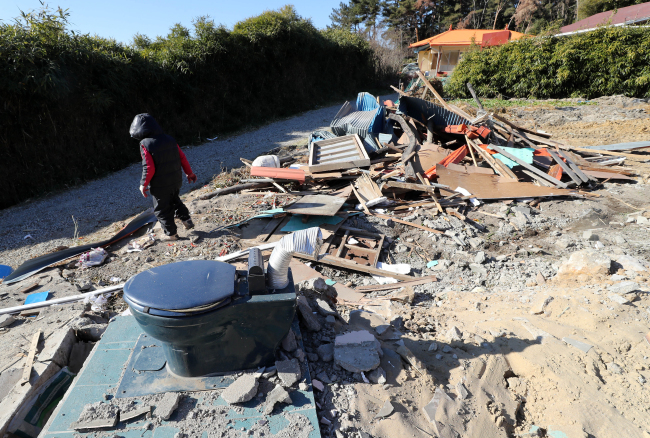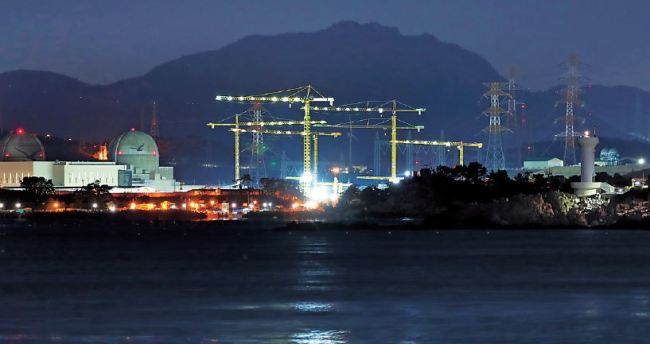[Safer Korea] Korea moves to address growing concerns over earthquake
By Shim Woo-hyunPublished : Jan. 1, 2018 - 14:51
South Korea has started to roll out measures to address the increasing public concern over the risk of earthquakes, after the nation was hit by two of the strongest earthquakes over the past two years.
Korea has long been regarded as an earthquake-free country but the latest record-high quakes in Pohang and Gyeongju have triggered concerns over future quakes on the peninsula, with experts here forecasting possibilities of stronger quakes hitting in the future.
Primary concerns are over the low rate of seismic safety features for buildings here, citing the wide range of damages suffered by the quake-hit cities located in the southeastern part of the nation.
Korea has long been regarded as an earthquake-free country but the latest record-high quakes in Pohang and Gyeongju have triggered concerns over future quakes on the peninsula, with experts here forecasting possibilities of stronger quakes hitting in the future.
Primary concerns are over the low rate of seismic safety features for buildings here, citing the wide range of damages suffered by the quake-hit cities located in the southeastern part of the nation.

According to the Ministry of the Interior and Safety, the quake in Pohang in November damaged 5,569 private establishments and 582 public facilities, including 233 schools.
More critically, the public have become more wary of the safety level of nuclear power plants clustered in the areas above geological fault lines, adding to the heated debates over the Moon Jae-in administration‘s nuclear-free pledge.
Of the nation’s 24 nuclear reactors, 18 are located along the southeastern coast, area that is more exposed to seismic activities.
According to pollster Realmeter‘s survey that asked 1,015 individuals above the age of 19, four out of 10 feared fallouts from nuclear reactor failure more than other damages brought on by the quake.
To address growing concerns over possible quakes in the nation, the government and the nuclear operator have released measures to counter quake damages.
In October last year, the Ministry of Trade, Industry and Energy announced that they will finish upgrading the nation’s nuclear seismic safety features entirely to withstand a magnitude 7.0 quake.

The Public Safety Ministry is also currently under the process of examining the fault lines in the quake-damaged area to reassess safety standards.
Korea Hydro & Nuclear Power have also stated that the Shin Kori units 5 and 6 being constructed in the southeastern city of Ulsan to be safe against a magnitude 7.4 quake. The government had accepted a civilian panel‘s recommendation to restart construction in October after a three-month suspension following the government’s initial decision.
Meanwhile, the government has also set to strengthen quake resistance of public establishments.
Starting in 2018, the Ministry of Education here will spend 200 billion won ($188 million) every year to increase seismic safety of public school buildings in the country. The ministry is to inject a total of 5 trillion won to complete installations of additional earthquake-resistant structures to all public school buildings here.
The Seoul Metropolitan Office of Education also announced that it will fix a separate annual budget of some 52 billion won every year to finish by 2030.
For private edifices, the state-led Architecture & Urban Research Institute said it will continue to offer inquiry service where citizens can check quake-resistance of their own settlements, including apartments and shopping districts.
By Shim Woo-hyun (ws@heraldcorp.com)





![[From the Scene] Monks, Buddhists hail return of remains of Buddhas](http://res.heraldm.com/phpwas/restmb_idxmake.php?idx=644&simg=/content/image/2024/04/19/20240419050617_0.jpg&u=20240419175937)




![[Graphic News] French bulldog most popular breed in US, Maltese most popular in Korea](http://res.heraldm.com/phpwas/restmb_idxmake.php?idx=644&simg=/content/image/2024/04/18/20240418050864_0.gif&u=)




![[From the Scene] Monks, Buddhists hail return of remains of Buddhas](http://res.heraldm.com/phpwas/restmb_idxmake.php?idx=652&simg=/content/image/2024/04/19/20240419050617_0.jpg&u=20240419175937)

![[KH Explains] Hyundai's full hybrid edge to pay off amid slow transition to pure EVs](http://res.heraldm.com/phpwas/restmb_idxmake.php?idx=652&simg=/content/image/2024/04/18/20240418050645_0.jpg&u=20240419100350)

![[Today’s K-pop] Illit drops debut single remix](http://res.heraldm.com/phpwas/restmb_idxmake.php?idx=642&simg=/content/image/2024/04/19/20240419050612_0.jpg&u=)